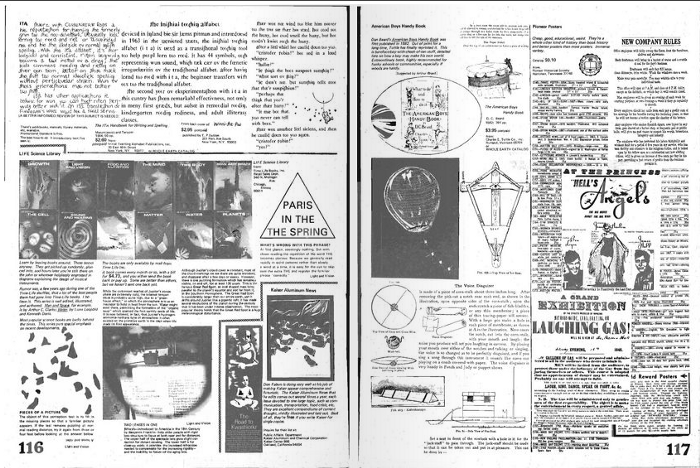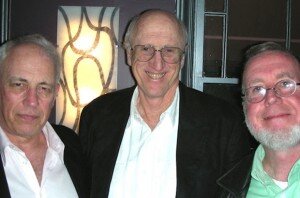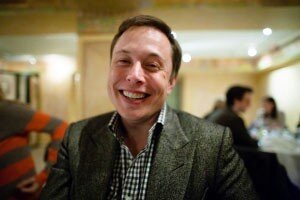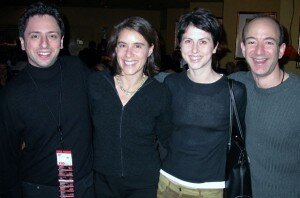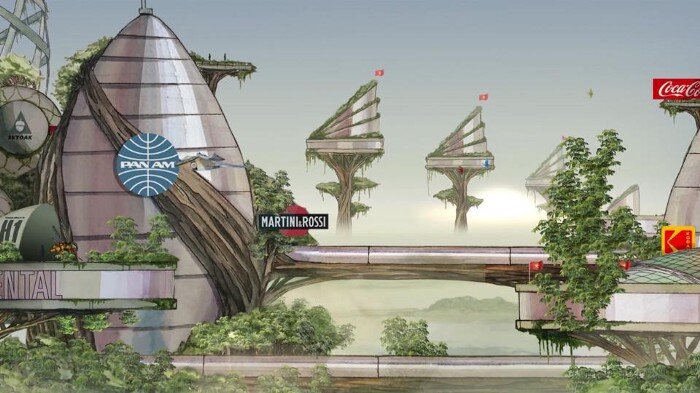Stewart Brand and the biotech trip
I’m writing a book on the history of the human potential movement and transhumanism, told through the lens of the Huxley family (Thomas, Aldous and Julian) and their friends. The book argues that the Huxleys were religious prophets, who imagined a future evolutionary religion of expanding human potential. I suggest this religion or worldview, which weaved through the late 19th and 20th centuries, is going to become yet more influential in the era of genomics. And, while generally praising the Huxley crew for their vision, I warn that their culture has a dark side, in its tendency to elitism, spiritual inflation and eugenics.
The last chapter takes us into the present day, and explores the influence of transhumanism in California and Silicon Valley. Each chapter has a lynch-pin figure — either a Huxley or a friend of theirs — and for the final chapter I thought I would make it Peter Thiel, even though he clearly never knew Aldous or Julian Huxley. But I’ve decided that, actually, Stewart Brand is a much better figure to end the book with.
Stewart Brand in the 1960s, and today
Stewart Brand is a remarkable figure who is best described as a pontifex, someone who connects different scenes and acts as a cultural catalyst. He has also been described as like Zelig or Forrest Gump — at key moments in cultural innovation, he pops up.
Brand did actually meet Aldous Huxley, when he was an undergraduate at Stanford. I don’t have any further details of this meeting (do you?) but Brand says he came away persuaded to major in biology.
He then joined the army, doing parachute jumps in the Airborne division, then afterwards became part of the San Francisco hippy scene.
He was a close friend of LSD icon Ken Kesey, occasionally drove the Merry Pranksters’ bus, and helped to organize the first Trips festival. He brought a technophilia to the acid scene — the invitation to the Trips festival read: ‘Everyone is invited to wear ECSTATIC DRESS & bring their own GADGETS (a. c. outlets will be provided).’
He was also connected to the pioneers of the personal computer and internet at places like XEROX and Stanford Research Institute.
When Douglas Engelbart, the head of the Augmented Intelligence unit at SRI, carried out the first live demo of a desktop publishing system, it was Brand who videoed it.
Engelbart believed that personal computers could be powerful augmenters and expanders of human intelligence and creativity — like LSD.
Brand saw — perhaps he was the first to see — that both computers and psychedelic drugs were mind-expanders.
Both increased connectivity, enabled creative leaps, enhanced potentialities, and encouraged play – when the first computer game was invented at MIT in 1962 (Spacewar), Brand recognized it was an important moment, and wrote an article on it.
After his adventures with Ken Kesey, Brand set up a magazine called the Whole Earth Catalog, which Steve Jobs and other Silicon Valley pioneers have described as a key inspiration to their work.
It was designed to support Californian hippies in their ethic of radical self sufficiency and communal living, by providing them access to tools — there were articles and adverts on everything from compost toilets to PCs to geodesic domes. It also had a lot of book recommendations — health, spiritual, philosophical, technical.
Jobs suggests it was ‘Google in paperback form, thirty-five years before Google came along’.You could roam around finding interesting and surprising information, educate yourself, disappear down rabbit holes.
Then, in the 1970s, Brand set up one of the first online communities, called the WELL (Whole Earth ‘Lectronic Link), where ‘the smartest people in the world’ could come together to discuss matters serious and trivial. It was a bit similar to the Edge Foundation — an elite club for the supersmart.
In the 1980s, Brand co-founded a scenario-planning consultancy called Global Business Network, which held hip conferences mingling CEOs with artists like Brian Eno and Peter Gabriel. He was thus a key figure in the blending of bohemia and business in California, which David Brooks would write about in his 2000 book Bobos in Paradise (Bobo means ‘Bourgeois Bohemian’).
By that stage, some of his hippy hacker friends — like Steve Jobs — had become billionaires, and The Edge Foundation would hold ‘billionaire dinners’ for the new intellectual and technological elite.
John Brockman, Stewart Brand, Kevin Kelly, Elon Musk, Sergey Brin and Jeff Bezos at the Edge Foundation’s ‘Billionaire’s Dinner
The outlaw libertarians had become the new oligarchs of the world.
I first read about Brand’s role in the development of Silicon Valley in Fred Turner’s excellent book, From Counterculture to Cyberculture, and then in John Markoff’s equally inspired What The Dormouse Said.
Markoff has written a biography of Brand, by the way, which is being published next year. I tried to get an early copy, no luck! There’s also a documentary on Brand’s life coming out soon, called We Are Like Gods.
That was the somewhat transhumanist slogan of the Whole Earth Catalog: We are like gods, so we might as well get good at it.
This year, Brand will turn 83, but he’s still in the thick of cultural innovation.
A decade ago, he set up the Long Now Foundation, which hosts the ‘smartest people in the world’ to talk about their ideas.
It’s kind of an HG Wells-type futurism — we should think not a year or five years ahead, but 20 years, 50 years, 1000 years, or 10,000 years!
I really recommend a book Brand published of brief two-page summaries of the last decade of talks at the Long Now Foundation. It’s like speed dating with geniuses.
The other thing Brand is into, these days, is biotechnology. So he’s come back to his original love of biology, and to the Huxleyan dream of expanding human potential through genetic technology.
Brand says that synthetic biology now is at the white-hot stage of exponential innovation that computing was at in the 1960s, when it evolved from huge mainframe computers owned by universities and the military, to hackers working in garages.
Many of the guests at the Long Now Foundation present work on gene editing and synthetic biology, like Drew Endy of Stanford, or George Church of Harvard, or Craig Venter.
Brand and his wife Ryan Phelan have set up their own organization, Revive and Restore, to resurrect various extinct species like the Woolly Mammoth and the passenger pigeon, by sequencing and cloning their DNA.
To be honest, I am just beginning to get my head around synthetic biology and gene editing. My slow humanities mind is trying to take it in, feeling like a neanderthal dunce all the time. I’m no genius billionaire.
As far as I understand the field, scientists have worked out how to sequence and decode the genome, and they’ve also worked out how to break down biological life forms into ‘bits’ known as biobricks.
Computers enable scientists to hack and re-build biological forms — DNA, proteins, whole organisms — using tools like cut, copy and paste. They can create entirely new life forms, as Craig Venter did in 2010.
The scientists in the field say this opens up a new field of innovation that will surpass the innovation of the last 50 years in the field of computers and the internet. Drew Endy says it will usher in a new industrial revolution.
When you think of the high-tech of the future, don’t think gleaming aluminium and silicon. Think living organic machines, houses, vehicles, or whole cities. Watch this video for a glimpse of the possible future:
Like earlier stages in Brand’s career, synthetic biology is a fascinating mash-up between technology and the arts. Synthetic biologists create new life forms and then sign them, like artists. There are new artistic fields mushrooming — synthetic biology architecture, design, aesthetics.
Brian Eno makes ambient music for the synthetic biology computer game, Spore — will we create new forms of music and poetry out of new life forms?
I understand some of the potential benefits of gene editing.
Gene editing and synthetic biology could create enhanced forms of plants which feed more people — improving on a process which has already been taking place over the last 10,000 years of agriculture.
Some of the biggest synthetic biology companies are working to create bio-fuels as an alternative to petrol and gas.
We’re also seeing a fast-growing market for synthetic meat, like Impossible Burgers.
The price of insulin is likely to reduce dramatically as scientists work out how to make it synthetically.
Our clothes will by made from spider silk made in vats (or grown from spider-goat hybrids — no really!). We can also make biodegradable plastic from GM plants.
We can reprogramme the genes of predator animals to make them less deadly — Florida has released gene-edited mosquitos which pass on infertility to future mosquitos, to reduce the incidence of illnesses like malaria and zika. And we can use gene editing to bring back extinct animals.
Synthetic biology may help us fight global warming, for example by creating algae that can absorb CO2.
And the field is already transforming human medicine.
We can use genetic testing to screen embryos for illnesses, and to turn off gene expression in humans for illnesses like sickle cell anemia.
We can sequence new viruses like COVID19 and create vaccines in days — the Moderna vaccine was created two days after the COVID gene was sequenced.
We may be able to enhance certain ‘supergenes’ in human embryos, like the ability to need less sleep, or to have stronger muscles, or to hold your breath for record times under water.
Perhaps we’ll be able to reprogramme our own cells to attack cancer, say, or even to reverse ageing.
The ability to create new life-forms is likely to be crucial if we try to inhabit and ‘terraform’ other planets, like Mars.
But there are risks as well.
More innovation means more economic and social disruption. As one critic put it, anything that comes from a plant or animal can now be grown in a vat. That’s very bad news for traditional agriculture and the two billion people who depend on it.
We’re in an era like the 70s in computing, of libertarian hackers (indeed this weekend you can see some of them present their work at the IGEM (International Genetically Engineered Machine) conference.
But, as in computing, the era of libertarian hackers is likely to be supplanted by monopolisation and militarisation. ‘Information loves to be free’ said Stewart Brand. Yes, but oligarchs love to be rich.
Another risk is bioterrorism. If it’s so easy for undergraduates today to hack e.coli, how hard is it to hack flu? Two apocalyptic cults — Osho’s sanyasins and the Aum Shinrikyo cult — have already used bioterrorism to try and clear the Earth for their followers. Others will surely follow.
There is also a risk of standardisation — Jaron Lanier warns that digitisation is making music boringly the same. What if biotechnology and gene editing does that with life forms? What if everyone wants to look the same, as they seem to do on Instagram?
Will we accidentally damage the ecosystem by the new species we introduce, just as fertilisers and pesticides wreaked terrible damage on ecosystems (including human fertility) in the 20th century?
Finally, will this new technology simply empower and enrich the oligarch class even further, creating a trillionaire class of augmented superhumans, and a new serf class of engineered slaves — perhaps we’ll bring back Neanderthals, so there are no pesky human rights issues.
I can tell this is a fascinating story, because I can see the big science writers prowling around it trying to find the scoop — Walter Isaacson’s latest book is on the discovery of CRISPR for example, while Michael Lewis’ new book is partly about the biotech wizards who discovered a way to rapidly test for COVID.
But for these stories to be really popular, we need to know and love the things that have been invented.
We wouldn’t have been into the film The Social Network if we weren’t into Facebook.
We wouldn’t have been into Isaacson’s biography of Steve Jobs if we weren’t into the iPhone.
And at this stage, gene editing and synthetic biology haven’t yet become part of our daily furniture.
And the challenge, for a story writer, is — is it a scene? Tom Wolfe captured the Merry Pranksters as a scene, Fred Turner captured Silicon Valley as a scene, but is biotech a ‘scene’? Are the pioneers of it as interesting and weird as Ken Kesey or Steve Jobs?
Like I said, I’m still getting my head around it. But it’s fascinating to watch.





